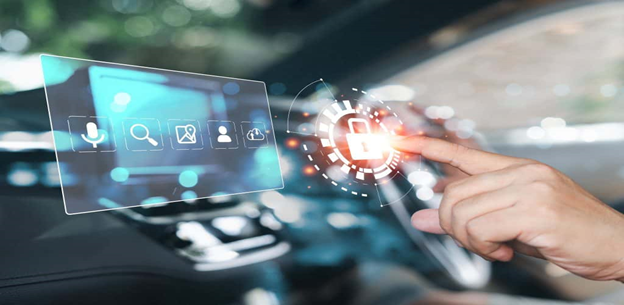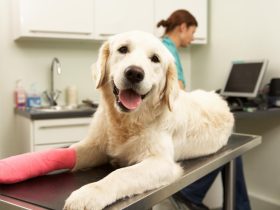Over the past ten years, there have been revolutionary changes in the automotive business. The number of new cars going online is rising. They have a clever technology connection.
This is to support improved driver-assistance technologies, electrified automobiles, and semi-autonomous driving, among other things. Modern technology contributes to increased convenience and safety when driving – see https://autosecure.net for further reading. It’s necessary to address some possible cybersecurity concerns that the interconnected system provides.
A lot of automakers are depending on companies that offer managed security services. By doing this, they want to lower the possibility of incursions, make use of their experience, and depend less on internal IT workers. Particularly when dealing with intricate hazards within the ecosystem of technology.
MSSP contributes to reducing the dangers associated with cutting-edge automobile technology. It safeguards critical data stored in the linked automobiles as well. When more car systems are brought online, this can contribute to the growth of trust in automotive technology.
WHAT ARE MANAGED SECURITY SERVICES?
These are provided by outside companies to manage and supervise an organization’s cybersecurity procedures. They usually provide an extensive variety of cybersecurity solutions and work remotely via the cloud. This covers infrastructure installation, ongoing security posture management for the company, and handling of major occurrences.
Certain places are the emphasis of some suppliers. Others permit the complete outsourcing of a company’s data security policy. For the following reasons, automotive companies may choose to collaborate with MSSP:
- inadequate internal IT resources
- the requirement for cybersecurity oversight and management after work
- investigations into incidents
- audits of data protection systems
Benefits of Working with an MSSP
- Businesses have access to more personnel and the knowledge suppliers have in the field of IT security.
- Processes can be managed from the cloud. Thus, allowing businesses to carry on with the least amount of interference and disturbance possible.
- It can effortlessly deliver reports to the company through its interface and keep up ongoing communication support.
- These services guarantee that the IT department of the company stays up to date on security-related developments.
- It provides the car sector with a wide range of services and lets them outsource their programs entirely. This is to deal with a particular security issue. This covers data protection – additional info about the law. As well as incident response, threat monitoring, audits, and regulatory compliance.
- They provide quicker deployment times and increase the ROI of the company’s cybersecurity efforts.
Data Security Practices in the Auto Industry
Incident Response Plan
Procedures for handling cybersecurity events that may have an impact on the automotive ecosystem are outlined in an IRP paper. This includes procedures for dealing with cybersecurity events to guarantee ongoing process enhancement. Included in this are the following:
- Assisting in making sure the company can react effectively and efficiently through measures. This includes creating roles and duties, testing the plans, training, and documenting the call tree and plan.
- Discovering incidents promptly to limit the potential impact, including actions. There are steps involved in locating, verifying, categorizing, and ranking possible incidents.
- Assembling a group to quickly reduce, eliminate, clean up, and recuperate from the danger. This could entail controlling business menace, carrying out technical response tasks, and coordinating work stream-wide initiatives.
- Incident closure, which could involve using debriefs to evaluate how well response protocols worked. It also entails monitoring, evaluating, and carrying out any longer-term corrective measures.
Collaboration and Engagement
To counter cybersecurity concerns, the automotive industry might interact with partners in this way.
- Participating in initiatives to exchange threat intelligence, vulnerability studies, and best practices constitutes information sharing.
- Events can include taking part in a range of event formats, creating events that include outside partners, or attending events that are organized by others.
- Programs include things like recognizing and taking part in different kinds of programs.
- Partaking in externally-led projects or creating initiatives to involve third parties are also covered.
Risk Assessment and Management
Issues with data security and safety may arise from the following:
- Laying out the general parameters and conditions for putting a cyber-risk evaluation technique into practice.
- Incorporating different safety evaluations at the right stages of a car or product’s lifecycle. This is to guarantee proper coverage.
- Roles and duties should be documented to enable stakeholders to understand what is expected of them in terms of timing, tasks, and roles.
- Choosing the right frequency for threat assessments throughout the risk lifecycle. Be aware that the risk scores could fluctuate from time to time.
- Formalizing a profile of risk tolerance to help with decision-making. A phase of the lifecycle may affect one’s risk tolerance. Usually, risk acceptance criteria evaluation is used to determine it.
- Establishing standardized procedures for assessing risk assessment outcomes and formulating treatment strategies.
- Conveying risk to stakeholders and leadership regularly. Ideally, simple language is being used. They can use this to compare the cybersecurity risks associated with vehicles to other, more conventional corporate hazards.
- Incorporating risk management guidelines and procedures into corporate operations governance. monitoring and enforcing adherence as well.
Awareness and Training
The ensuing enhances stakeholders’ comprehension of cybersecurity risks:
- Providing training and awareness initiatives. That’s by determining the program’s scope, creating a plan, and evaluating the demands of the company.
- Creating products and awareness-raising content, obtaining training materials, and encouraging an ethic of knowledge.
- Conveying the strategy plan to carry out the program. Additionally, distributing goods, carrying out training activities, and providing instruction.
- Enhancing the program frequently. It’s by keeping an eye on things, reporting on them, evaluating their efficacy, and spotting areas for improvement.
Threat Detection, Monitoring and Analysis
- Outlining a procedure for danger identification and analysis based on knowledge of the threat landscape for automobiles. creating an operational model and threat team structure, as well. It also involves defining the roles and responsibilities of stakeholders.
- Defining the criteria for threat intelligence, which will aid in locating sources and streamlining the gathering procedure.
- Setting priorities and identifying different strategies and approaches to establish a framework for monitoring threats.
- Establishing a methodology for threat analysis. This covers the identification of threat events, their validation, and the required courses of action.
- Creating a procedure and selecting the appropriate equipment. Information is being shared, stored, and organized for optimal efficiency.










